I can already predict that this article will be controversial. I know this because of the heated arguments that I have seen on the watch forums about the 2017 summer movie, Dunkirk. Sure, Watch Hunter is a blog about watches, not about World War II disaster films… but I promise that there is a small tie in. Many movies have timepieces in them that are either placed there to be historically accurate or to promote a watch brand through product placement. Omega comes to mind for the later James Bond movies, but that is a different story. Dunkirk had the first example with a historically relevant timepiece.
Nothing drives watch collectors crazier than seeing a flash of a watch on the silver screen and not being able to figure out what it is. We will spend megawatts of mental energy and practically burn through our internet bandwidth trying to “Sherlock Holmes” an answer from a glance, a blur or a partial glimpse of a watch. Some watches are easy to spot if they are famous models. Others become more challenging to identify if they are not commonly seen, such as a vintage military issue watch like the one that is used several times by the pilot character played by Tom Hardy. In this case, it has been confirmed that the watch used was an Omega CK2129, a standard issue watch used by British pilots.
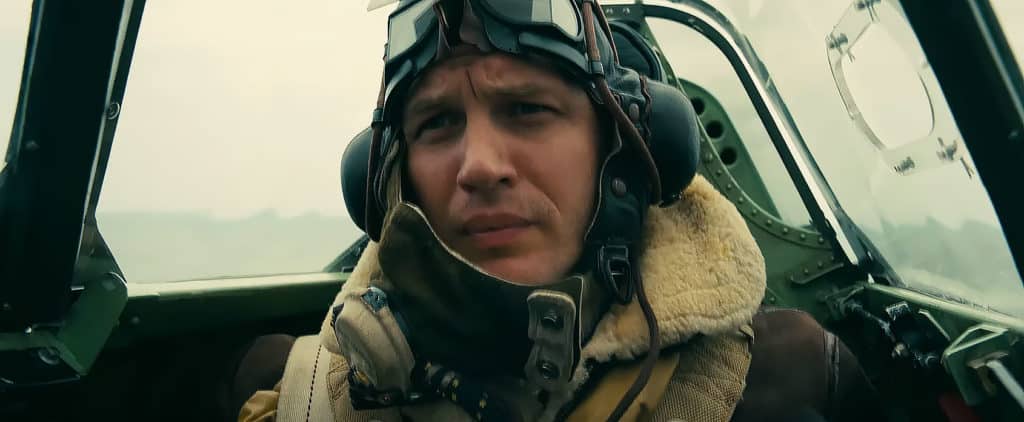
Tom Hardy as a Spitfire pilot. Photo: Warner Brothers
Before I go further, I must warn against unintentional spoilers in this article. I may discuss a few basic facts about the Battle of Dunkirk, but I will do my best not to reveal any major plot points or surprises of the movie. What happened at Dunkirk is not really a mystery. In a nutshell, the British and French armies had just gotten the “blitzkrieg” kicked out of them and were surrounded by the German army in all directions. The Allied troops were licking their wounds on the beaches of Dunkirk, and it looked like the outcome of World War II might have been decided right then and there. Remember my statement that this article might be controversial? I am pretty sure that a history buff is cringing at my statement, however, allow me to talk in great generalities and “what-ifs”.
The number of Allied soldiers stranded on the Dunkirk beaches was reportedly close to 400,000. That is a giant number and any one of those people could have the potential to change the future. Nobody can say for certain how the world would have been different or the outcome of World War II would be if that many of the Allied forces were annihilated or captured. This concept is standard fare for time-travel movies where one single change to an event can have unforeseen consequences on the future.
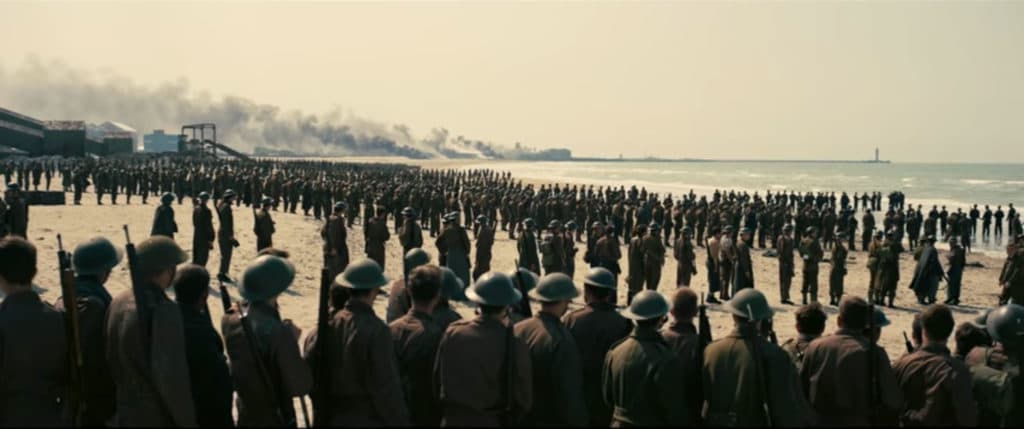
Beach Scene from Dunkirk Movie. Photo: Warner Brothers
The opinions that I have read from other people, seem to be split on whether Dunkirk passes the test of being a good war movie. Most people seem to like it, but I have mixed feelings. There are parts that are very good, but there was a lot to be desired. Uh oh… more controversy coming up!
With all due respect to Mr. Nolan, the Dunkirk movie could have been pushed further to draw the audience in and create a better illusion of the scope, complexity and sheer scale of the Dunkirk disaster. I did not talk to Mr. Nolan, nor did I read other reviews of the movies that might have tried to explain the intentions of the director. This is simply my opinion based on what I saw and how it made me feel as a fan of cinema… nothing more. In the end, we all have to decide if a movie works for us individually or not… so your opinion may be different.
I think that great movies create believable illusions… lesser films never fully achieve them. Once viewers notice anything that seems “off” in a scene, they become keenly aware that they are sitting a crowded theater with sticky floors instead of being immersed in the story playing on the screen. For me, the biggest noticeable issue was the lack of actual soldiers in many scenes. I am not sure exactly what 400,000 men look like, but at times there looked like only a few hundred extras were on the beaches of the Dunkirk movie. While I concede that probably all of the soldiers might not be on the beach at one time, but spread out in the surrounding areas, it still seems a little sparse in many scenes. Specifically, the lack of extras became evident on some ships that did not have crowded decks. I would suspect that these would be packed to the brim, but instead, there was a single row of soldiers along the railings making the ship look empty.
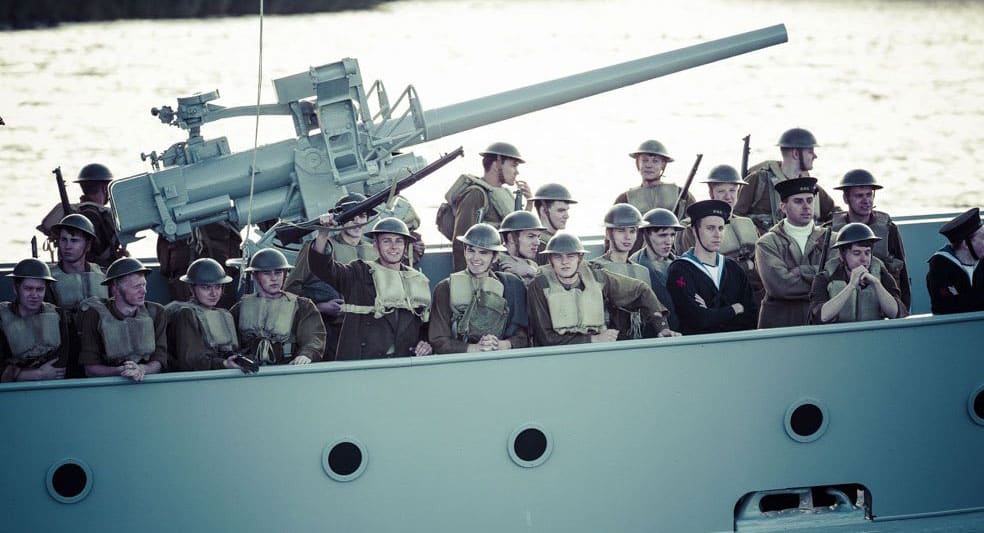
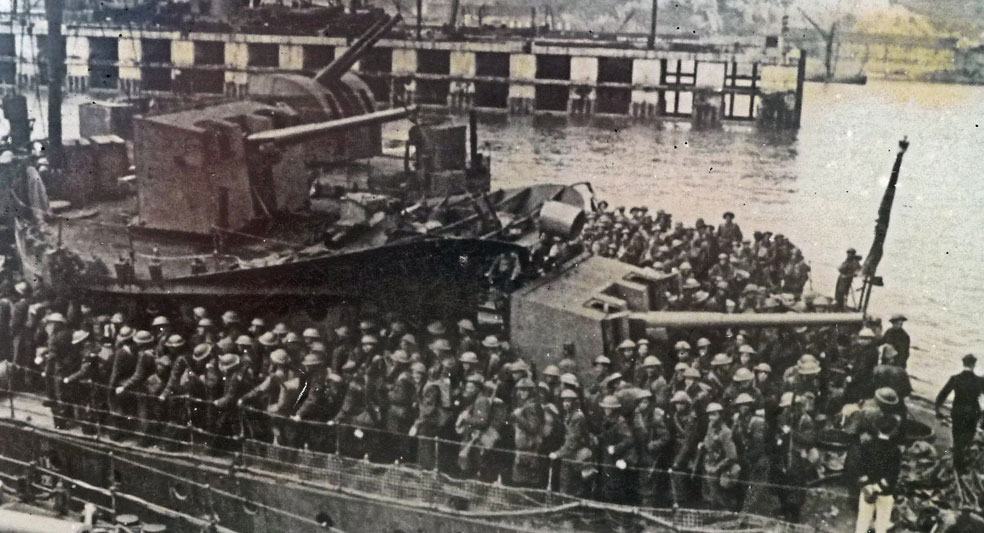
Another crucial scene shows a burning airplane, but the engine is missing. There is just a pole holding a propeller. Did they run out of money or time? Did they think that we would not notice that?
Other imperfect illusions may be forgivable due to the director wanting to film in the actual location of Dunkirk. This is commendable, and I feel like his heart was in the right place. However, historical accounts of Dunkirk describe it as a city that had suffered greatly in the battle with parts of it in ruin. The movie version of Dunkirk looks like it was just sleeping on a Sunday morning. I heard that director Nolan did not want to use CGI in this film, but use practical effects to give it a sense of realism, but I would argue that the movie could have been better with small amounts of computer effects. For instance, imagine parts of the city with more billowing smoke or partial ruins. Maybe they could remove some of the reminders of modern life like TV antennas or modern buildings. Or, if you do not want to burn an actual airplane engine, then for goodness sakes, just add a digital one after the fact… I don’t think that would have been difficult to do.
I am not trying to be a troll here. I realize that compromises need to be made when making a movie due to time and budget constraints. I also admit that I was expecting a different kind of movie. I think many of us desperately hope for another “Saving Private Ryan type of film. You have to admit that Dunkirk trailers promise action and imply that we will see typical war scenes. What we got instead, was something else… a slower more nerve wracking loose story of survival. See what I mean in the trailer below…
If I had to explain this movie to someone, I would not necessarily call it a war film, but a disaster film. More controversy? I have never seen a “war movie” try this hard to remove the actions of the protagonists… or frankly the protagonists themselves. You will not see a single German soldier’s face for the whole film… maybe a silhouette for a split second, but that is it. The German army is not even verbally referenced. Instead, they are referred to as “the enemy”. Talk about being generic… one of the most competent and feared armies of all time loses its name. No Nazis, no SS, no Luftwaffe, no Wehrmacht. Nada.
These omissions seem to be intentional, and this is why I would describe this as a disaster film first and a war movie second. So you say “what about the German fighters and bombers shown in the film?” Well, no pilots are shown so the airplanes are just faceless tools of destruction… very much like a tornado or a tidal wave would be handled in any number of summer blockbuster disaster films starring Dwayne “The Rock” Johnson. The faceless army seems to be portrayed more as a force of nature, not adversaries with minds and motivations of their own. I have to admit, I found this to be a novel, yet an odd choice of direction. Kudos to Nolan for trying something different, but as a fan of the war movie genre, I was somewhat let down, even if only by my own preconceived notions.
Speaking of nature, that is another sticking point I have about the film. Even with the extreme conditions that the filmmakers faced with shooting in a volatile location like the coast of Dunkirk, I feel like the minimal effort was made to give the film visual continuity. I remember a scene of the civilian captain talking with bright sun on his face. A split second later, it was overcast or rainy. I thought… wow!… that weather sure changes FAST! This sort of error seems amateur to me, and it could have been minimized. They could have at least color graded the film to have a consistent presentation for the audience. They could have tried harder for continuity. Instead, much of the film seems like random footage that was handed to an editor who was told “make some kind of story out of all this”… “and don’t worry about making it look consistent with lighting or color… nobody will notice.” I am sorry if that sounds harsh, but directors of this level should be above a nitpick like this.
I guess that I snuck a quick movie review onto the site in the guise of a watch sighting, but hopefully, I gave some food for thought. I could go on for pages more, but at the end of the day, you can make up your own mind. I am neither recommending or panning this movie. I am merely trying to set expectations that it is not another “Saving Private Ryan,” but a completely new take on a war movie that you might not expect…. and it has a cool Omega watch worn by my favorite character in the movie. I found Tom Hardy’s performance epic… even behind an aviator’s mask. But then again, anyone who knows me that will realize that the guy flying a World War II Spitfire will naturally rise to the top of the heap.
To bring this review back the subject of watches, IMDB reports “The ticking sounds that serve as a crucial theme on the film’s score were recorded by composer Hans Zimmer from one of director Christopher Nolan’s own pocket watches. He then put the sounds into synthesizers and altered them in different ways for the soundtrack.” How cool is that!


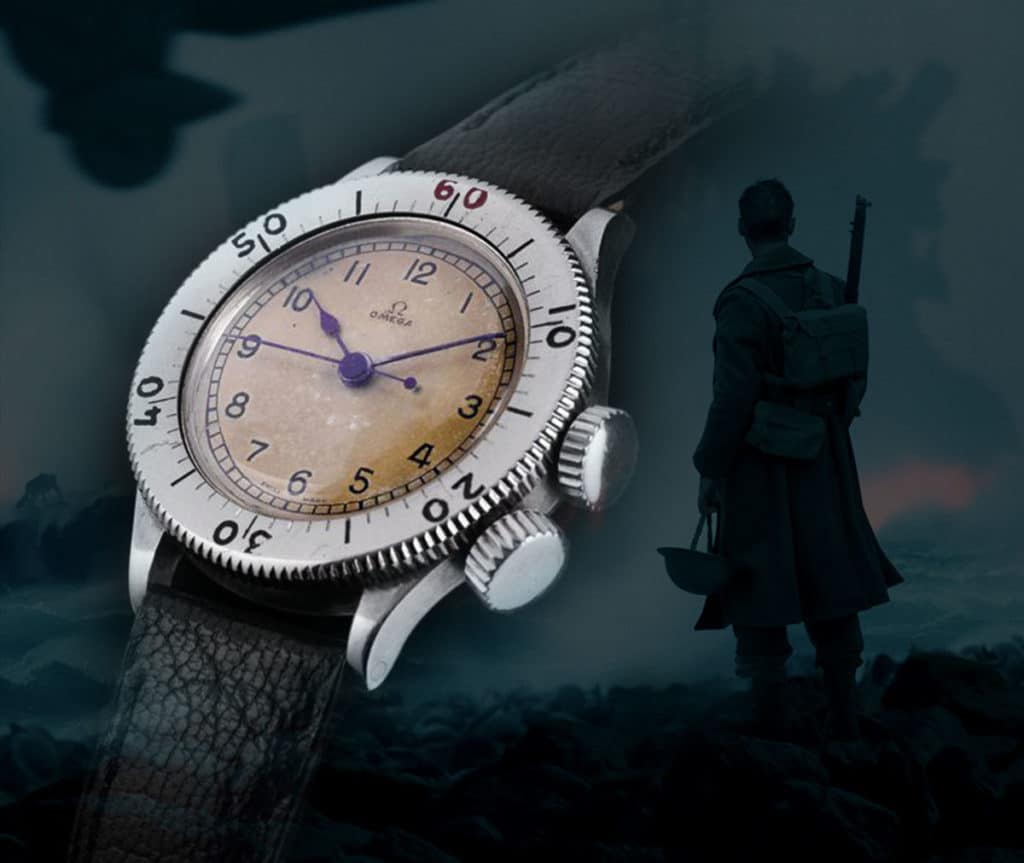
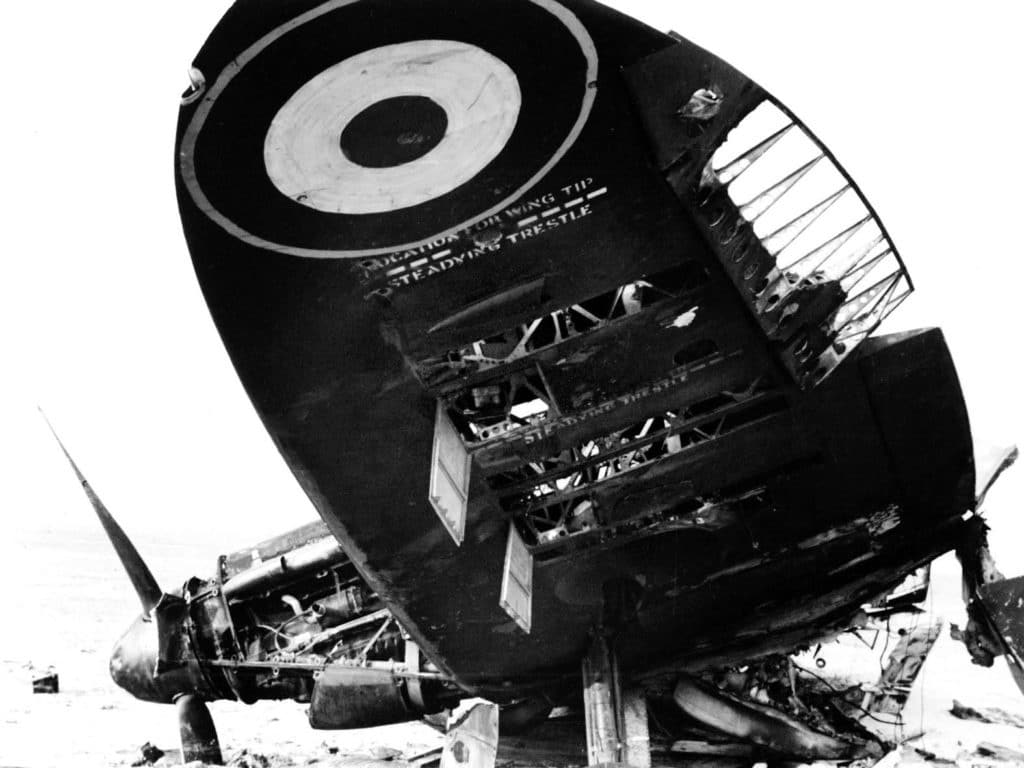
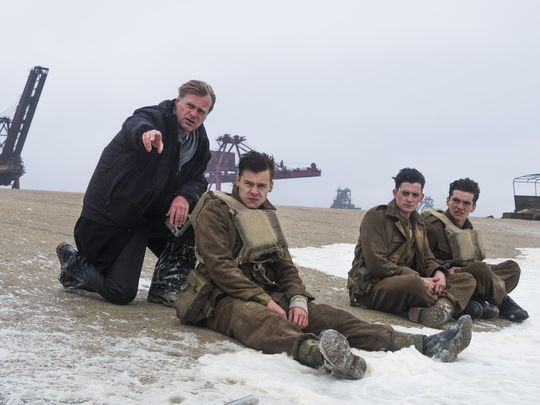
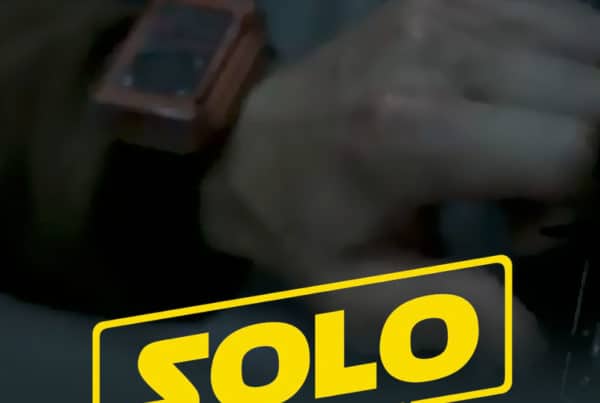

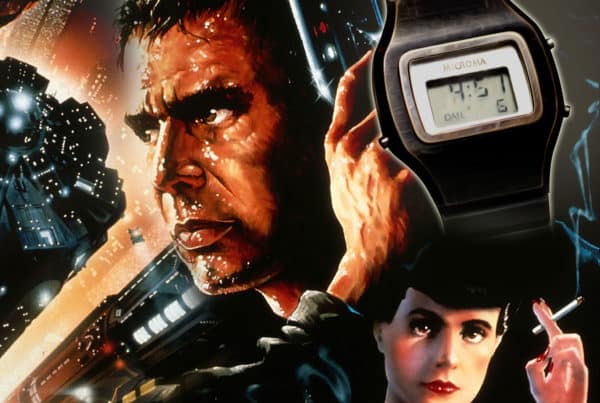
Join the discussion One Comment